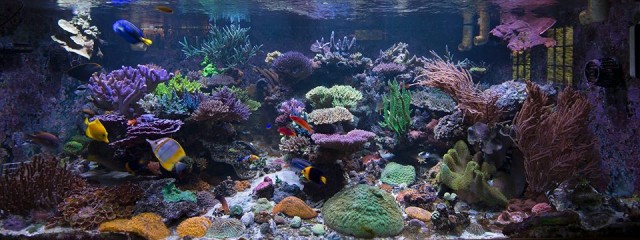
It’s been 2 years now since I started the LED experiment on my 500G reef. I replaced my 3 400W Metal Halides with EcoTech Marine 8 Radion G2 pro LEDs and I have been quite satisfied with the change. No more chillers turning on in the summer, although I do have to increase the heaters in winter.
Coral color has been great, and I am satisfied with the growth on most corals. I would say that the growth rate is about 80% of what I was seeing with the MH on most corals. And that is fine with me given the other benefits I gain from using LEDs, such as not having to replace MH bulbs every year, not turning on my chiller in summer, and creating dusk effects for fish spawning. I have had 100% reliability on the units, which is impressive. I was expecting to see some hardware failure, but that has not happened yet.
Does that mean that LEDs have reached the pinnacle of reef lighting? There are a lot of things I like about LEDs, but I would still hesitate to make that statement. There are a few issues that they need to resolve. In my assessment, I would list them as follows:
1) Spread of light. I still find the light more directional than MH which has its pluses and minuses. But for a large tank like mine, I would like more spread and less shadowing caused by the light directionality
2) Better mixing of colors. While there has been an improvement in this respect, especially by LED designs that use tightly clustered LEDs, I still do not like seeing multiple colors in the shadows.
3) Spectrum. While a lot of people swear by the heavy blue spectrum, I would much rather prefer fuller-spectrum LEDs.
4) No power reduction when dialing in the LED spectrums. Most lights in the market today (except for the new AI Hydra) reduce total power and light output when reducing the intensity of the different LED channels.
There are still some corals where I am not seeing growth that comes even close to MH. Most noticeably A. Millepora and the green Bali Slimer. These are corals that grew as weeds under my MH, but grow significantly slower under my LEDs. It does not seem like an issue of light quantity, but I think the light quality plays a bigger role here. There is another odd observation I can make about coral growth under LEDs. I found that corals frags tend to develop a larger base encrustation with LEDs, wonder why?









Sanjay, very interesting observations. I thought long and hard about using LEDs to start my new SPS dominant tank but I went with MHs, which worked so well for me in the past. I started the new tank off with just frags so I wanted to maximize growth but, as you point out, LEDs certainly have their advantages.
Great review, I wonder the impact on new Hydras HD on grow (too soon to tell). Regarding base incrustation it might be the light direction (like you point out spread of light) and also colour blend (is a topic I do not see much in coral grow), but the blend of colours on different leds need probably some high to get it right, and that happend lower in the tank, not higher….donno, just ideas.
Sanjay – how about coloration and pigmentation? Coloration being the effect of the light source on the appearance of the coral, and pigmentation being the actual color change in the coral tissue (even under sunlight, for example)? Is there a blend of light sources that maximize growth, coloration, and pigmentation? In terms of directionality – you had published great work on reflectors for MH. How about the effect of lenses and complex reflectors on multichip LEDs?
Sanjay, I just read an old article about your tank experiencing RTN. How did that turn out? Were you able to figure out the cause? I experienced it on a few of my frags and it came out of nowhere.